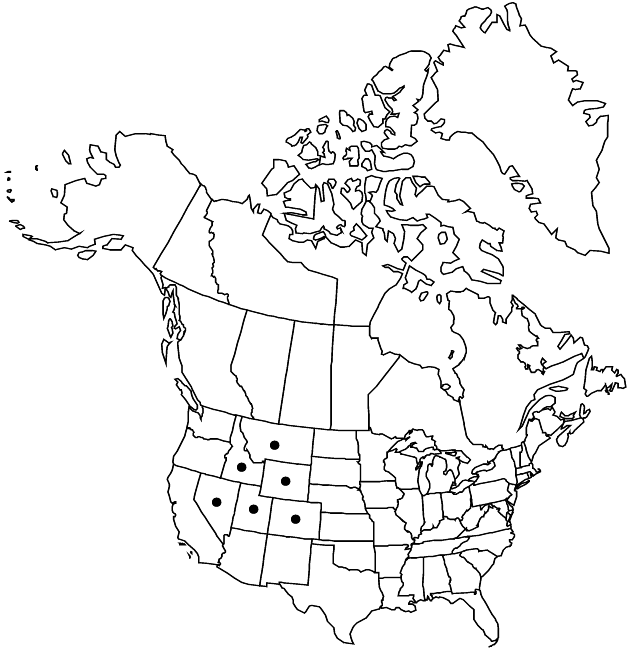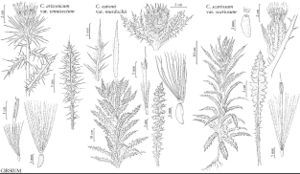Cirsium eatonii var. murdockii
Great Basin Naturalist 42: 200. 1982.
Stems erect or ascending, stout, 10–75 cm. Leaf faces glabrous or nearly so or abaxial ± villous and/or tomentose with septate or non-septate trichomes. Heads sessile or short-pedunculate in erect, few-headed, subcapitate or spiciform arrays. Involucres 2–3 cm, thinly to densely tomentose with septate or non-septate trichomes (phyllaries sometimes obscured by tomentum). Phyllaries green or purplish-tinged; outer with few lateral spines; apical spines slender. Corollas white to pink or lavender, 17–23 mm, tubes 6–10 mm, throats 5–8 mm, lobes 3–6 mm. Pappi 11–18 mm. 2n = 34 (as C. tweedyi).
Phenology: Flowering summer (Jul–Sep).
Habitat: Talus slopes, rocky subalpine and alpine ridges, openings in subalpine forests, subalpine meadows
Elevation: 2300–3900 m
Distribution

Colo., Idaho, Mont., Nev., Utah, Wyo.
Discussion
Of conservation concern.
Variety murdockii grows in the central Rocky Mountains from central Idaho and southern Montana to western Wyoming and northern Colorado. It also grows in the Ruby Mountains of northern Nevada and the Uintah Mountains of northeastern Utah. Considerable variation occurs in quantity and quality of pubescence of the involucres of var. murdockii. In some individuals the pubescence is so dense that it obscures the phyllary bodies whereas in others the individual phyllaries are clearly visible. Most commonly the pubescence consists primarily of septate trichomes, but sometimes finer non-septate trichomes predominate. Both types of trichomes may be present.
Variety murdockii is known to hybridize with Cirsium pulcherrimum var. pulcherrimum and C. scariosum var. scariosum in Wyoming.
Selected References
None.
Lower Taxa
"fine" is not a number.
